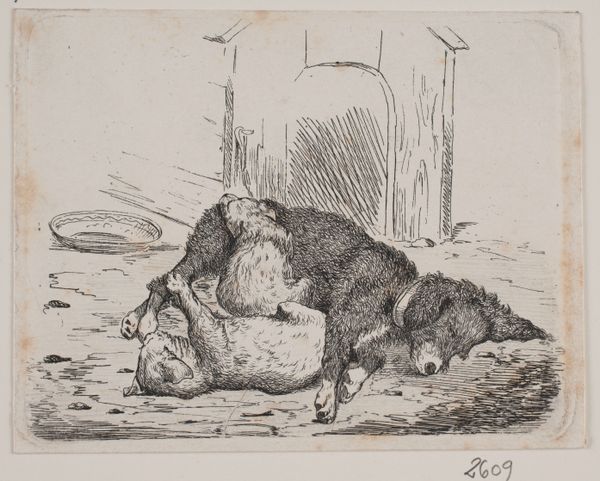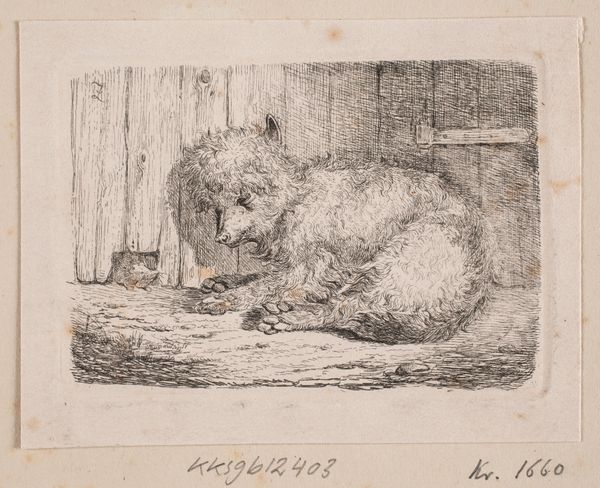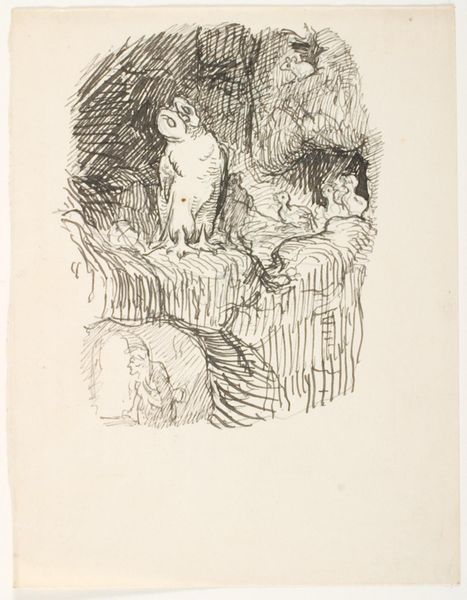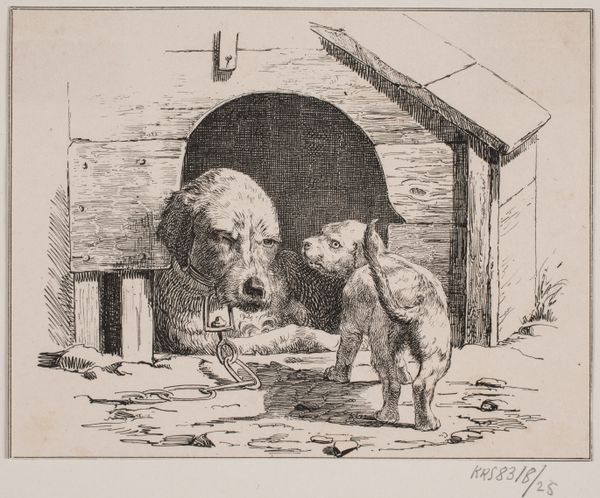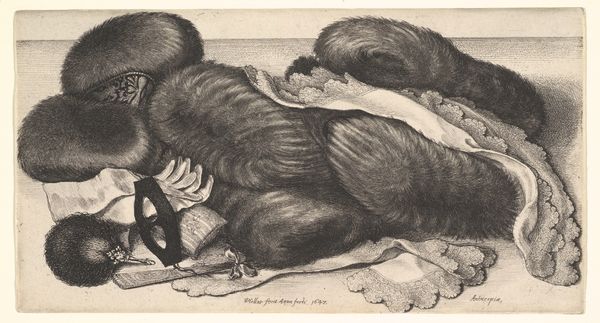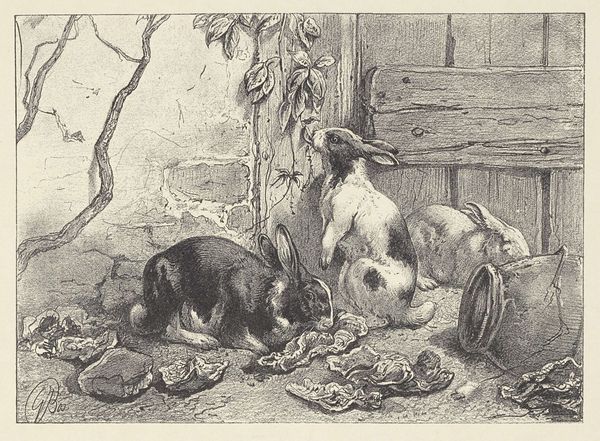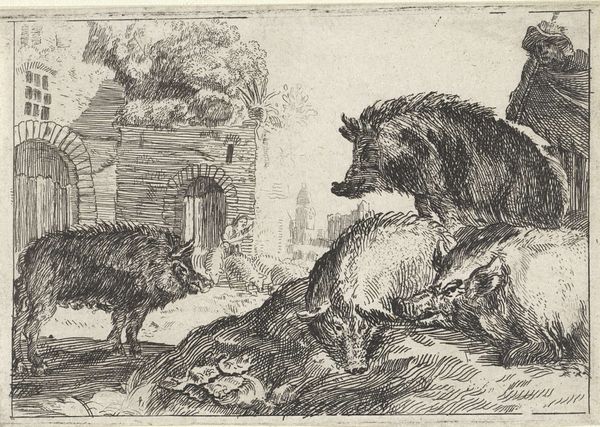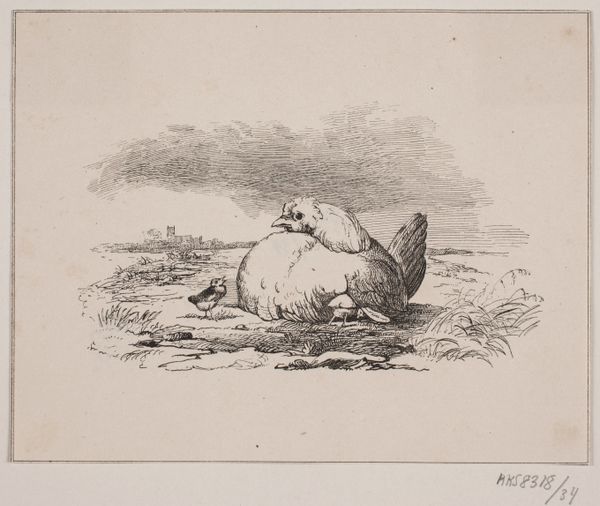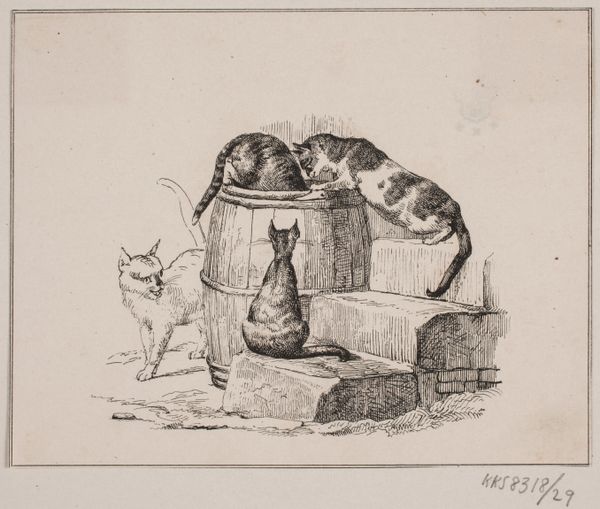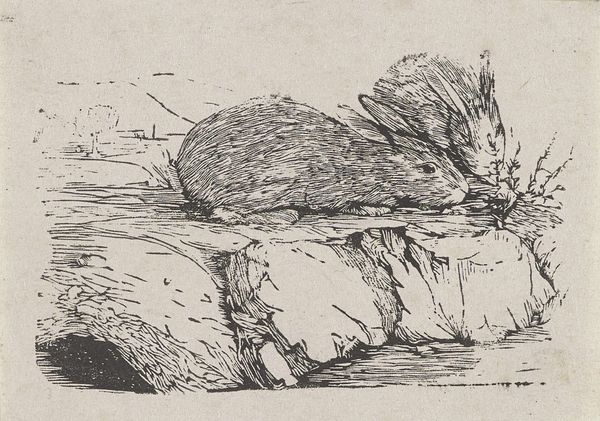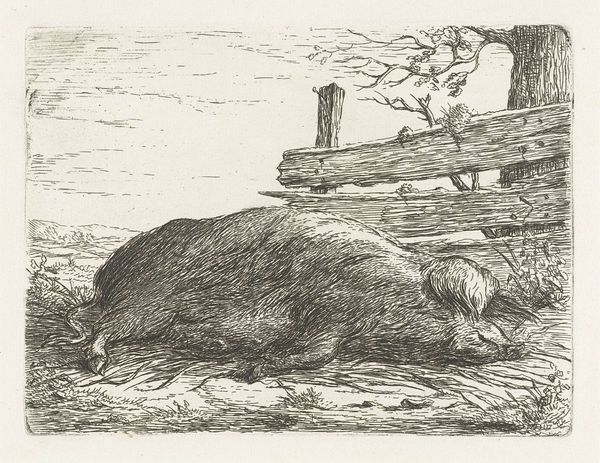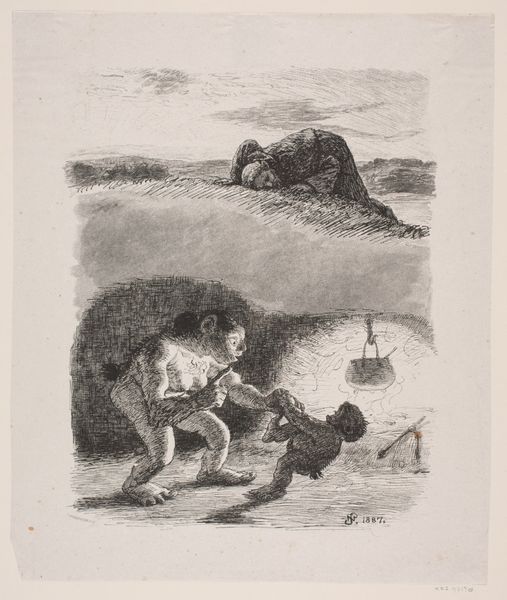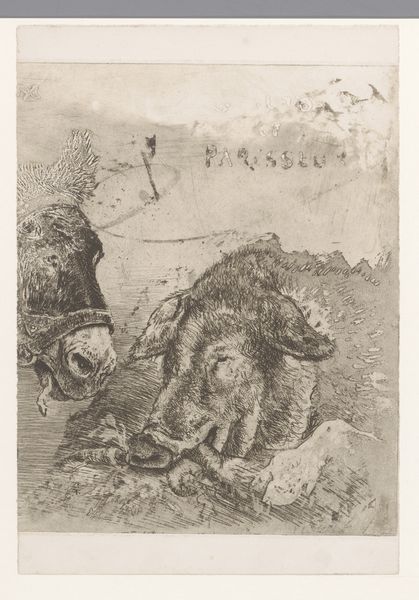
drawing, print, etching, ink, pen
#
drawing
#
animal
# print
#
pen sketch
#
etching
#
ink
#
pen
#
genre-painting
Dimensions: 80 mm (height) x 105 mm (width) (bladmaal)
Curator: This is "Lænkehund med hvalp," or "Chain Dog with Puppy," an etching and ink drawing by Adolph Kittendorff, dating back to 1850. What are your initial thoughts? Editor: Well, beyond its immediate charm, the stark monochromatic palette emphasizes the rough texture of the dogs’ fur and the coarse ground beneath them. It gives the whole scene a rather melancholy feeling. Curator: Indeed. Notice how the artist masterfully employs etching to define the light and shadow. The linework varies in weight and density, creating depth and volume, especially in the depiction of the mother dog's fur and musculature. Semiotically, the chain on the dog's neck tells a tale. Editor: Exactly! It speaks volumes about the dog’s subjugated existence, tethered, perhaps a representation of societal constraints of the era, especially when one considers the period's rigid social hierarchy. Is this a metaphor for women's confinement to the domestic sphere and to child-rearing? Curator: It could be. But let's not overlook the compositional balance. The triangular arrangement, with the mother dog anchoring the base and the playful puppies rising towards the apex, creates a visual harmony. Editor: Yes, but that balance feels almost deceptive. The playfulness of the pups clashes sharply with the mother's dejected pose. Doesn't this contrast highlight the loss of freedom once assumed in youthful, playful existence? Also, consider where the work sits now, within the collection of SMK. What does it mean that this representation of an enslaved animal now exists as an object to be examined in Denmark’s National Gallery? Curator: I concede that the dog’s perceived enslavement offers many paths of inquiry, but its intrinsic merit resides in Kittendorff's manipulation of line and tone to capture a fleeting, poignant moment in time. The economy of strokes suggests movement, vitality... Editor: Vitality tempered by oppression, no? It's a potent reminder that even within images of familial tenderness, the chains of social injustice can constrict and define experiences. Curator: A compelling argument, to be sure, which encourages close interrogation of an image which might at first appear so sentimental. Editor: Indeed. Kittendorff's etching, while formally captivating, also invites us to question the roles assigned to the marginalized and contemplate resistance in confined environments.
Comments
No comments
Be the first to comment and join the conversation on the ultimate creative platform.
